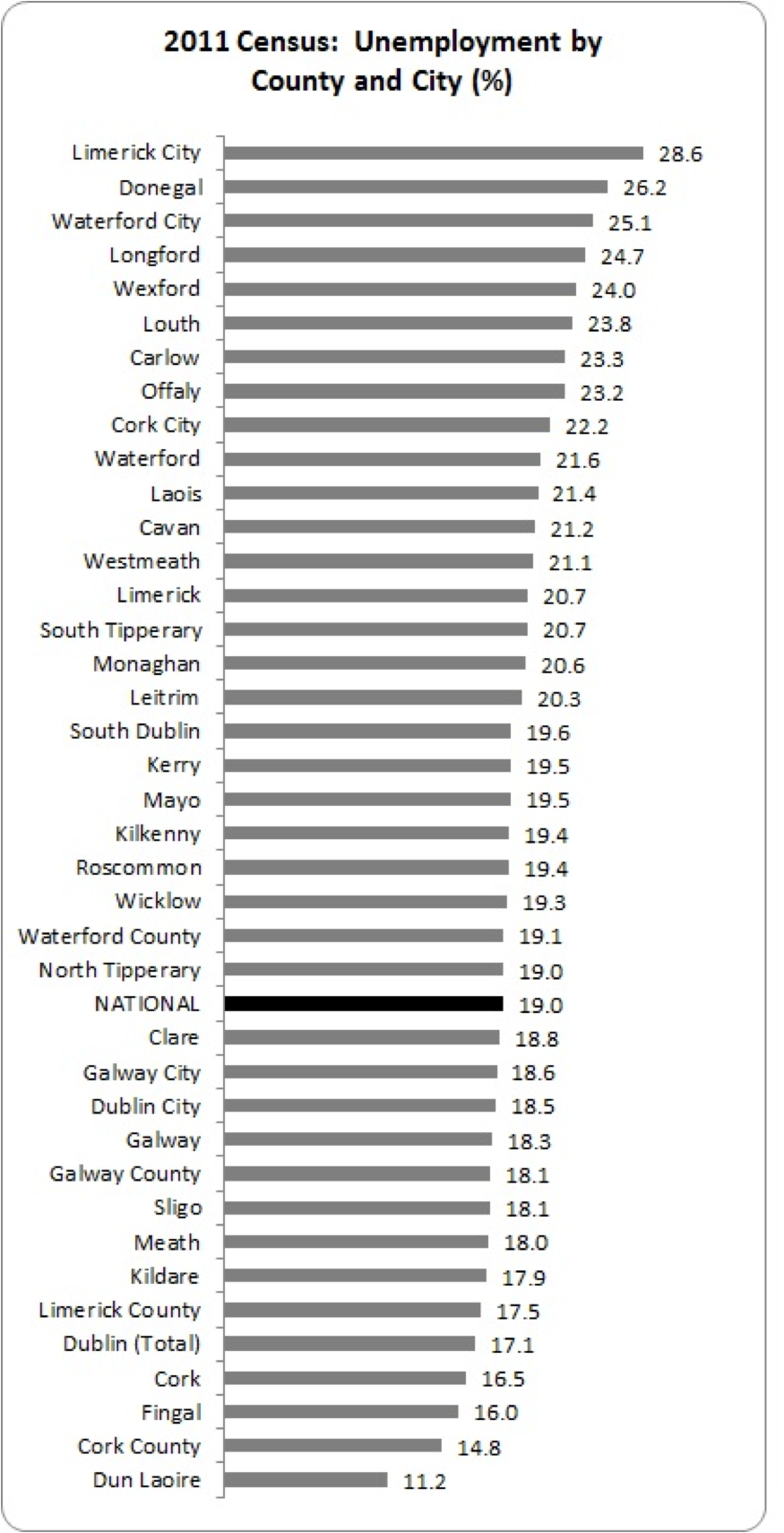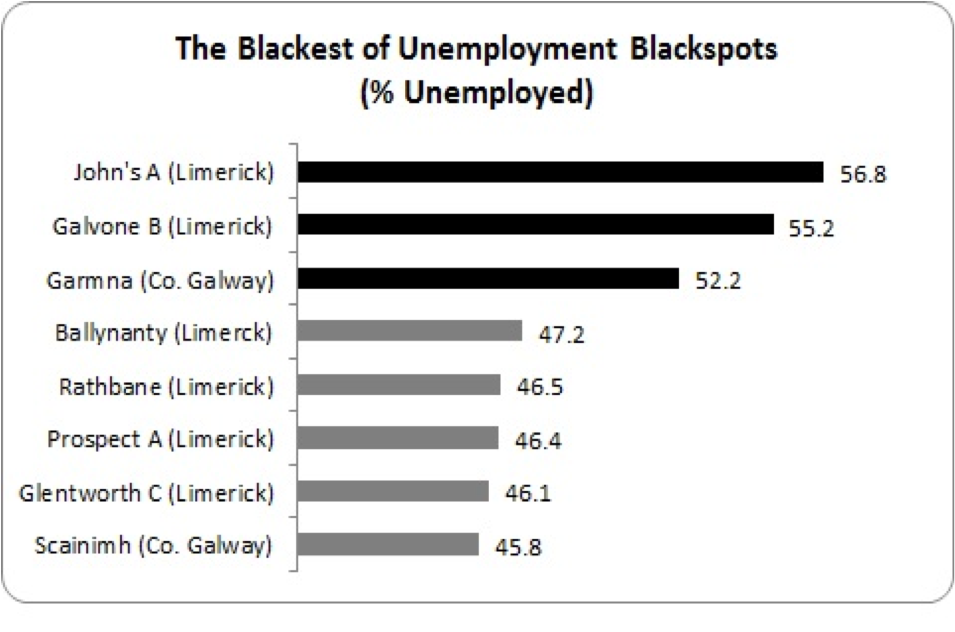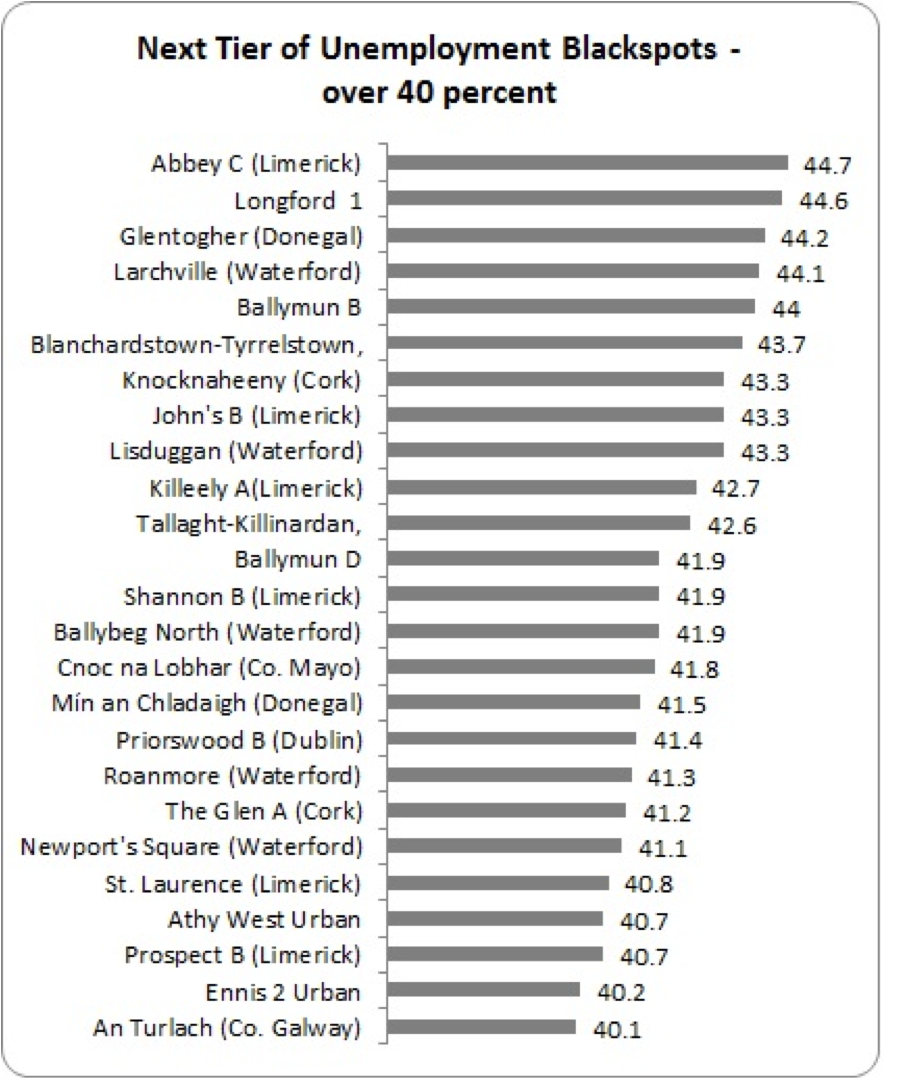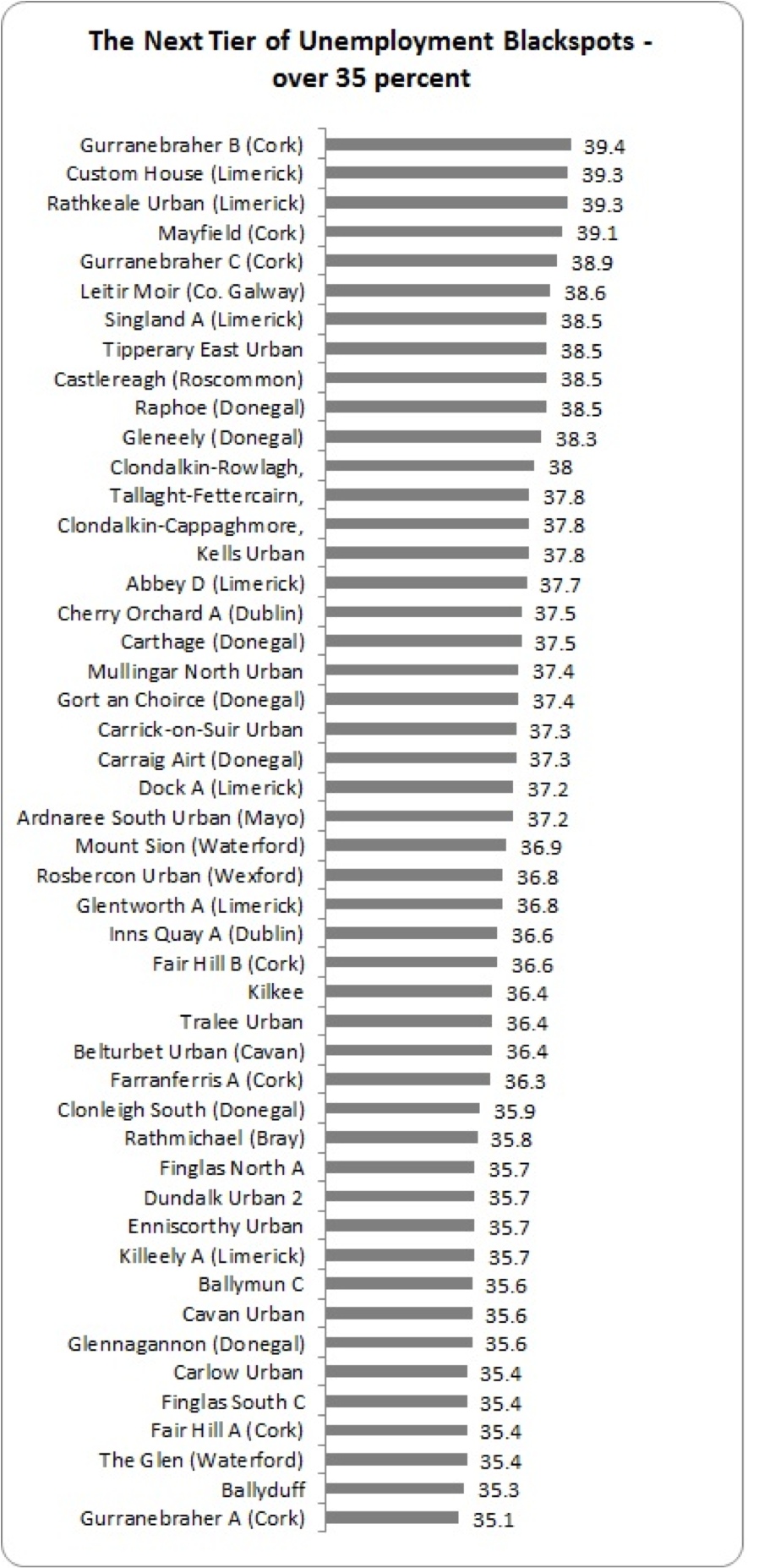The disappointment of unemployment blackspots

Glas Securities have described the unemployment situation in Ireland as 'disappointing'. It's not disappointing, it's an obscenity. By Michael Taft.
When the unemployment figures were released yesterday, showing the highest levels since 1993, Glas Securities wrote a note that described the situation as ‘disappointing’. Well, that’s a word for it. I could think of other, more urgent words. And if 14.9% is ‘disappointing’, what about unemployment blackspots, where unemployment exceeds 50%? I suppose we could call this ‘really disappointing’. Let’s take a countrywide tour of really disappointing areas with the help of the 2011 Census.
The recent census records unemployment levels. This measurement is different from official unemployment figures as they are self-reporting. We discussed this before. In the last Quarterly National Household Survey, from the first quarter of this year, official unemployment was 14.8%. However, 17.1% reported themselves as ‘unemployed’. The difference is that people may be in a temporary part-time job at the time of the survey, or on a training scheme, but still characterise their situation as one of being unemployed. The CSO’s Indicators of Labour Supply captures some of this difference: the unemployment rate is 14.8%, but when under-employment and those marginally attached to the workforce are included, the figure rises to 25%.
This explains why the recent census, where everyone reports, produces a figure of 19% unemployment, as opposed to the official figures at the time as 14.2%. We should keep that discrepancy in mind when reviewing the figures below, though it doesn’t change the story or lessen the ‘disappointment’.
Let’s first look at counties and major cities.
 Most counties and cities are above the national average. Limerick City leads this dismal table with over 28% reporting unemployment, followed by Donegal and Waterford City. It’s a pretty grim state when in the city or county you live in more than one in four are unemployed.
Most counties and cities are above the national average. Limerick City leads this dismal table with over 28% reporting unemployment, followed by Donegal and Waterford City. It’s a pretty grim state when in the city or county you live in more than one in four are unemployed.
But the census also provides a look at smaller areas, through the Small Area Statistics. The average population per small area is approximately 1,350 – though some can be much larger. While the full data will be produced later in the year, the census provides data on ‘unemployment blackspots’ by small areas. Here’s what they found.
 Given that Limerick City leads the county/city table, it is not surprising that areas in the city suffer from the highest unemployment. There are three areas in the country with unemployment over 50% and the worst areas can all be found in the west.
Given that Limerick City leads the county/city table, it is not surprising that areas in the city suffer from the highest unemployment. There are three areas in the country with unemployment over 50% and the worst areas can all be found in the west.
 This group is a bit more inclusive – if that’s a word for it. Limerick still leads this table of areas with 40% or more unemployment but we find areas from nine counties. The worst area in Dublin can be found in Blanchardstown; Knocknaheeny is the worst area in Cork. Donegal, Waterford, Kildare, Clare, Longford Mayo also feature.
This group is a bit more inclusive – if that’s a word for it. Limerick still leads this table of areas with 40% or more unemployment but we find areas from nine counties. The worst area in Dublin can be found in Blanchardstown; Knocknaheeny is the worst area in Cork. Donegal, Waterford, Kildare, Clare, Longford Mayo also feature.
To round off this disappointing list we find the following.
 Even more counties are represented in this table of unemployment over 35 percent: Tipperary, Roscommon, Meath, Kerry, Louth, Cavan, Carlow, Wexford etc.
Even more counties are represented in this table of unemployment over 35 percent: Tipperary, Roscommon, Meath, Kerry, Louth, Cavan, Carlow, Wexford etc.
What this shows is that while concentrated in some areas, unemployment blackspots are a national phenomenon, located in both urban and rural areas. There are 81 unemployment blackspots as listed by the CSO, as defined by 35% unemployment or more. There are more – if we consider unemployment of over 30% a blackspot.
Language is important here. It must rise to the situation we are describing. This is not a disappointment. This is an obscenity, and an indictment of successive government policy that such a situation can arise where more than one in three people can be unemployed in an area.
This calls for an urgent and sustained response. This calls for resources, investment and, most of all, jobs – whether that is jobs in the market or useful work provided by the state in conjunction with social and community organisations. The overriding priority is to get people back into the economy.
The priorities of current economic policy are all wrong. John Maynard Keynes once said that if you look after unemployment, the budget will look after itself. After reviewing these numbers we can conclude that we have a lot of looking after to do. {jathumbnailoff}
Image top: iwishicoulddescribeittoyoubetter.
